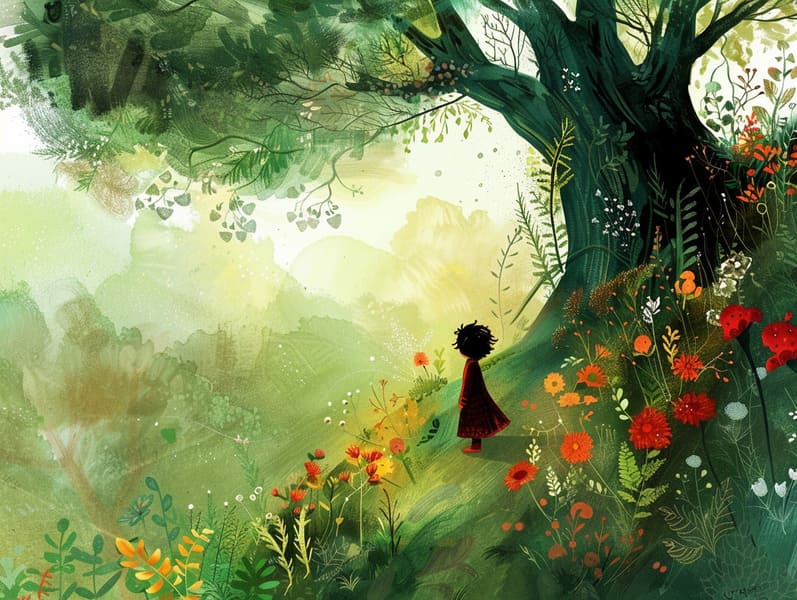Understanding the Legacy of Classic Fairy Tales with Its Continued Delight.
Understanding the Legacy of Classic Fairy Tales with Its Continued Delight.
Blog Article

Traditional fairy tales have timeless appeal. These stories have been shared from one generation to the next far before they were ever published. They developed from a variety of traditions, including American traditions. They were initially disseminated among elders, often carrying themes and messages related to the societal norms and beliefs of the time.
The famous Grimm duo, the two Grimm brothers, were among the first to assemble many of these beloved tales. Their volume, "Grimm's Fairy Stories," included narratives like "Cinder Maid," "Little Brother and Little Sister," and "The True Story of Snow White," which have since become cornerstones in the world of classic fairy tales. Similarly, Hans Christian Andersen's magical fairy tales, such as "The Mermaid," and "The Duckling that Could," have gained the love worldwide, guaranteeing their place in the pantheon of famous fairy tales.
Though they are centuries old, traditional fairy tales remain as important as ever, especially as children's bedtime stories. These delightful tales are now available in various formats, including vibrantly illustrated books, fantastical animations, and internet fairy tales.
Their lasting appeal can be ascribed to several fascinating points:
Significant Morals: Old fairy tales often provide important moral lessons. Stories like "The Boy Who Cried Wolf" teach the virtue of truth, while "The Hare and the Tortoise" highlight the values of steadfastness and unassuming nature. These stories offer little ones clear distinctions between correct and incorrect, forming their moral compass in a subtle yet profound way.
Empathy and Awareness: Classic fairy tales frequently feature heroes facing problems and hurdles, prompting readers to resonate with their struggles and back their triumphs. For instance, "Beauty and the Beast" points out the value of seeing inner beauty to recognize the true nature of a person, fostering tenderness and comprehension.
Cultural Knowledge: Many traditional fairy tales are interwoven with the cultural contexts from which they grew. Understanding these tales can provide delightful insights into different beliefs, building a sense of world appreciation and acknowledgment.
Imagination and Innovation: The imaginative elements in ancient fairy tales—mythical creatures—kindle children’s imaginative ideas. These narratives lead readers to otherworldly realms, activating fantasy-filled thoughts and a sense of marvel that lasts a lifetime.
Ancient fairy tales are not only charming but also pedagogical. They serve as charming tools in enhancing various cognitive and affective skills in the young. When traditional fairy tales are told out loud, they nurture speaking abilities by teaching new linguistic elements and complicated sentence structures. This these guys practice also improves auditory perception and focus, as young readers stay focused, eager to see what happens next.
Furthermore, debating the themes and characters of timeless fairy tales can promote reasoning skills and analytical skills. Kids are instructed to see patterns, guess what will happen, and know cause and effect. These examinations also encourage young readers speak out their thoughts and feelings, advancing their emotional intelligence.
In today’s information age, the prevalence of free fairy tales online has made these stories more obtainable than ever. Digital sites and programs offer vast collections of traditional fairy tales that can be looked at or played anytime, anywhere. Fairy tales read aloud are particularly in demand, supplying an enjoyable way for little ones to savor these whimsical stories. Audio stories and narrated videos transport characters and settings to life, often accompanied by bewitching background sounds and songs that improve the narrative experience.
The timeless allure of old fairy tales lies in their ability to evolve to today's world while staying true to their fundamental ideas. Contemporary versions of these stories often spotlight more representative characters and modern settings, making them familiar to today’s audience. However, the fundamental themes of valour, kindheartedness, and honesty remain unchanged, continuing to appeal to listeners of all ages.
Fairy tales also offer a sense of peace and understanding. They introduce a organized narrative with a straightforward beginning, middle, and end, often ending with the termination of conflicts and the triumph of justice over injustice. This predictability can be calming for little ones, providing a sense of invariability in an unpredictable world.
Classic fairy tales continue to mesmerize and train new generations, maintaining their elegance and importance in modern society. As kids' bedtime tales, they make accessible a perfect blend of fantasy and learning, sustaining moral values, empathy, and creativity. The availability of digital storybooks and the popularity of fairy tales read out loud affirm that these timeless tales remain reachable to new generations.
By safeguarding and passing on these stories, we continue to celebrate the rich tapestry of cultural heritage and cultural heritage. Whether you are viewing a beautifully illustrated book, accessing a web collection, or listening on an spoken story, the spell of traditional fairy tales is always within reach. These fairy tales convey of the unchanging influence of narratives and its ability to unify us across time and space.
Whether you are enjoying a colorful picture book, accessing a cyber library, or playing an spoken story, the enchantment of children's fairy tales is always within reach.
These narratives highlight of the persistent impact of narratives and its ability to draw us together across epochs and places, casting a charm that delights and instructs alike.